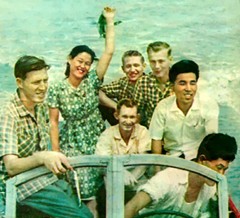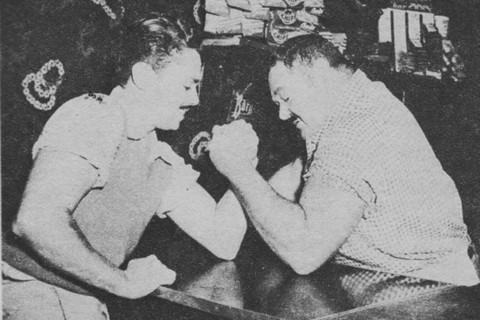 Whenever a plane I’m on is close enough to its destination that houses and cars appear, I can’t help thinking to myself: “If I fell from here, could I survive?” There is something about having a visual sense of the ground that makes a parachute-less airplane jump seem survivable. If those motor vehicles can zip along the highways below with such silent smoothness, surely I could manage to flutter to Earth like a feather.
Whenever a plane I’m on is close enough to its destination that houses and cars appear, I can’t help thinking to myself: “If I fell from here, could I survive?” There is something about having a visual sense of the ground that makes a parachute-less airplane jump seem survivable. If those motor vehicles can zip along the highways below with such silent smoothness, surely I could manage to flutter to Earth like a feather.
It’s all a ridiculous illusion, of course, as the vast majority of humans who fall more than a scant three stories do not live to tell the tale. But there are some fantastic exceptions, many of which are chronicled here. And based on the handful of incidents in which people have survived drops from well above 10,000 feet, there is even a rough set of instructions for those who wish to prepare themselves for similarly dangerous circumstances. A useful snippet for readers who live in fear of plunging from the heavens:
Just how fast are you going? Imagine standing atop a train going 120 mph, and the train goes through a tunnel but you do not. You hit the wall above the opening at 120 mph. That’s how fast you will be going at the end of your fall. Yes, it’s discouraging, but proper planning requires that you know the facts. You’re used to seeing things fall more slowly. You’re used to a jump from a swing or a jungle gym, or a fall from a three-story building on TV action news. Those folks are not going 120 mph. They will not bounce. You will bounce…
At this point you will think: trees. It’s a reasonable thought. The concept of “breaking the fall” is powerful, as is the hopeful message implicit in the nursery song “Rock-a-bye, Baby,” which one must assume from the affect of the average singer tells the story not of a baby’s death but of its survival. You will want a tall tree with an excurrent growth pattern—a single, undivided trunk with lateral branches, delicate on top and thicker as you cascade downward. A conifer is best. The redwood is attractive for the way it rises to shorten your fall, but a word of caution here: the redwood’s lowest branches grow dangerously high from the ground; having gone 35,000 feet, you don’t want the last 50 feet to ruin everything. The perfectly tiered Norfolk Island pine is a natural safety net, so if you’re near New Zealand, you’re in luck, pilgrim. When crunch time comes, elongate your body and hit the tree limbs at a perfectly flat angle as close to the trunk as possible. Think!
As always in these situations, though, it’s better to be lucky than good. Just ask Vesna Vulovic, who survived the 1973 bombing of JAT Flight 367 for reasons that no one has ever been able to figure out. Vulovic herself credits a slight physiological abnormality:
PB: Looking back at the incident, how do you think you survived?
VV: Nobody knows that. One of them said that I had very low blood pressure. I should never have been an air hostess in fact. I had a lot of coffee to drink before my interview, so that when I had my medical exam I passed. Maybe my low blood pressure saved me. I lost consciousness quickly and my heart did not burst.
American tail gunner Alan Magee also survived a drop from great heights, after being shot down over France in 1943. The secret of his survival? Perhaps it was incessant screaming.
(Image of Free Fall via G.I. Joe: Underground)
















